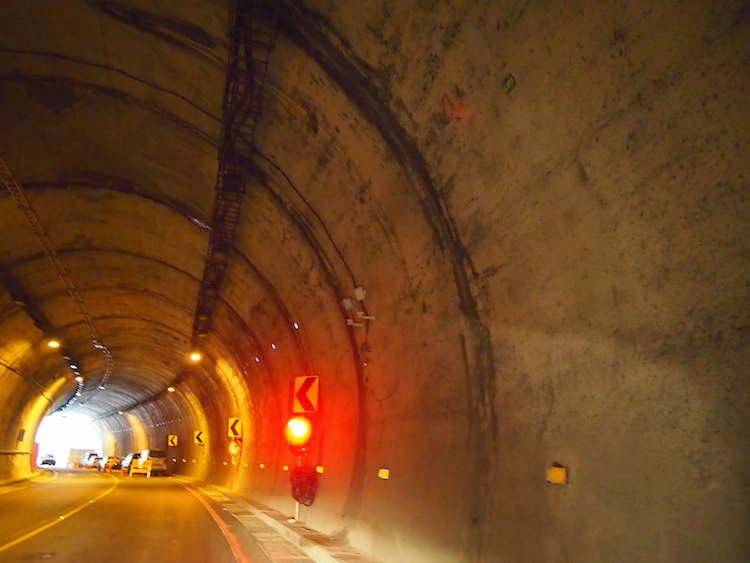Taroko Gorge Experience (Can You Believe There Was a Traffic Jam?)
8:00 PM
As I was browsing through pictures of my time in Taroko Gorge, Hualien, Taiwan, I felt so many regrets. I regret not having better photography skills, I regret not cleaning my lens the day before, I regret that my hands can get shaky sometimes. You get the point. I couldn’t even count how many times I said BAGUS BANGET- that’s Bahasa Indonesia for very beautiful. Taroko is sublime, and weeks later its beauty still burn at the back of my mind.
Just a typical view in Taroko… *sighing dreamily*
Just a typical view in Taroko… *sighing dreamily*
What exactly is a gorge? Before coming to Taroko, I honestly had no idea what “gorge” means. I looked it up and according to the dictionary on my laptop, gorge is defined as
“A narrow valley between hills or mountains, typically with steep rocky walls and a stream running through it”In reality, Taroko is indeed a textbook example of that word and so much more: deep valleys between tall misty mountains, lush green trees with orangish shade as a sign of autumn, and streams of Liwu River adorned with rocks that seem to have formed thousands of years ago.
At certain areas, there are huge holes on the rocky walls where swallows live. I didn’t see any swallows that day; it is said that they become more active during mating season. Anyway, it was absolutely frustrating trying to photograph these holes, they look so big in reality. Why my pictures make them look small? *weeps*
Another scenic point is the famous Eternal Spring Shrine, which was built to commemorate men who lost their lives during the construction of the highway back in the 50s. Looking back at it, I just realized how difficult and laborious it must had been!
If you wanted, you could also hike to the higher part of the Eternal Spring Shrine. I didn’t though, it was just… so high!
Besides sightseeing, cycling and trekking are most likely the top two on the list of things to do in Taroko. Since I can’t ride on a normal bike *Boo!*, let alone mountain bike, I had to skip cycling. Cycling in Taroko seems to be fun and challenging though, owing to the fact that it is the mountains and the road goes up and down. Cyclists also have to be watchful of passing vehicles and occasional rockfall. There is also a Taroko cycling competition, which just took place last week.
As for trekking, Taroko has numerous trails, among them are Shakadang Trail (8.8km), Jhuilu Old Trail (10.3km), and Baiyang Trail (4km). Shakadang Trail is the nearest trail to the park entrance. You have to climb down 70+ stairs to reach the trail, which is not a problem. Climbing up is another problem, don’t you think?
See the tunnel-like indentations on the rock? That’s Shakadang Trail.
The Park tries its best to prevent accidents caused by occasional rockfalls. I think they look like mesh stockings... a very useful mesh stockings. Hahaha!
For additional precaution, The Park has put board signs saying “Do Not Linger, Beware of Rockfalls, Please Pass Quickly” everywhere. How can you not linger when the view looks like this? Those rocks are so pretty! Pretty pretty rocks, I wanna touch you.
Jhuilu Old Trail requires official permit, read here and here for more details. I didn't trek here, maybe next time? Check out this awesome-looking bridge leading to Jhuilu Old Trail!
Baiyang Trail is the trail that ends at a water cave. Read my experience at Baiyang Trail HERE.
Besides all the beauty I witnessed, another thing about Taroko will stuck in my mind for eternity: there was a TRAFFIC JAM! Had I and my Jakarta vibes bequeath this curse to Taroko? Obviously it was’t a Jakarta-worthy traffic jam or even a Puncak-level traffic jam (in other words… a traffic jam bad enough to kill your sanity). But still, for a person who didn’t expect to see traffic jam in Taiwan, seeing one was shocking, more so because it was in the middle of the mountain. On top of that, there were also red lights and green lights! Apparently some of the roads were under construction due to damages caused by landslide, thus red lights and green lights were used to control traffic. How awesome is that??
See all the buses? My cab driver said that those were tour buses carrying Chinese tourists. It happens everyday during peak hours (around 4pm when most day tours end); no matter whether it is fall, winter, spring, or summer. He tried to assure me that it wasn’t I who brought this traffic jam upon Taroko. Uhm… Okay. I choose to believe him. It makes me feel better.
Taroko's "back" seen from the cab on the way back to Hualien City:
I’m going to end this post with words quoted from a board sign in Taroko that every person must take heed, not only at Taroko, but also at every single place on earth: “Leave nothing but footprints. Take nothing but pictures.” Keep the world clean people!
A.
Taroko Gorge, Hualien
Official Website: Click Here
* I went to Hualien from Kaohsiung by express train (TRA); the journey took around 5-6 hours. I ordered the ticket online from TRA’S official website, it costed around NT 650 per person. If your itinerary is fixed, I totally recommend buying the ticket online because the price is cheaper compared to on the spot.
* Getting around Taroko by cab is probably the easiest way. My cab driver, Mr Tonny Teng is very helpful, punctual, knowledgeable, and he speaks English really well (it’s hard to find one)! He even provided ponchos, sandals, and a waterproof backpack to venture the Baiyang Trail. Price varies according destination and number of passengers. Simply e-mail him for more details! He always replies promptly.






































0 comments